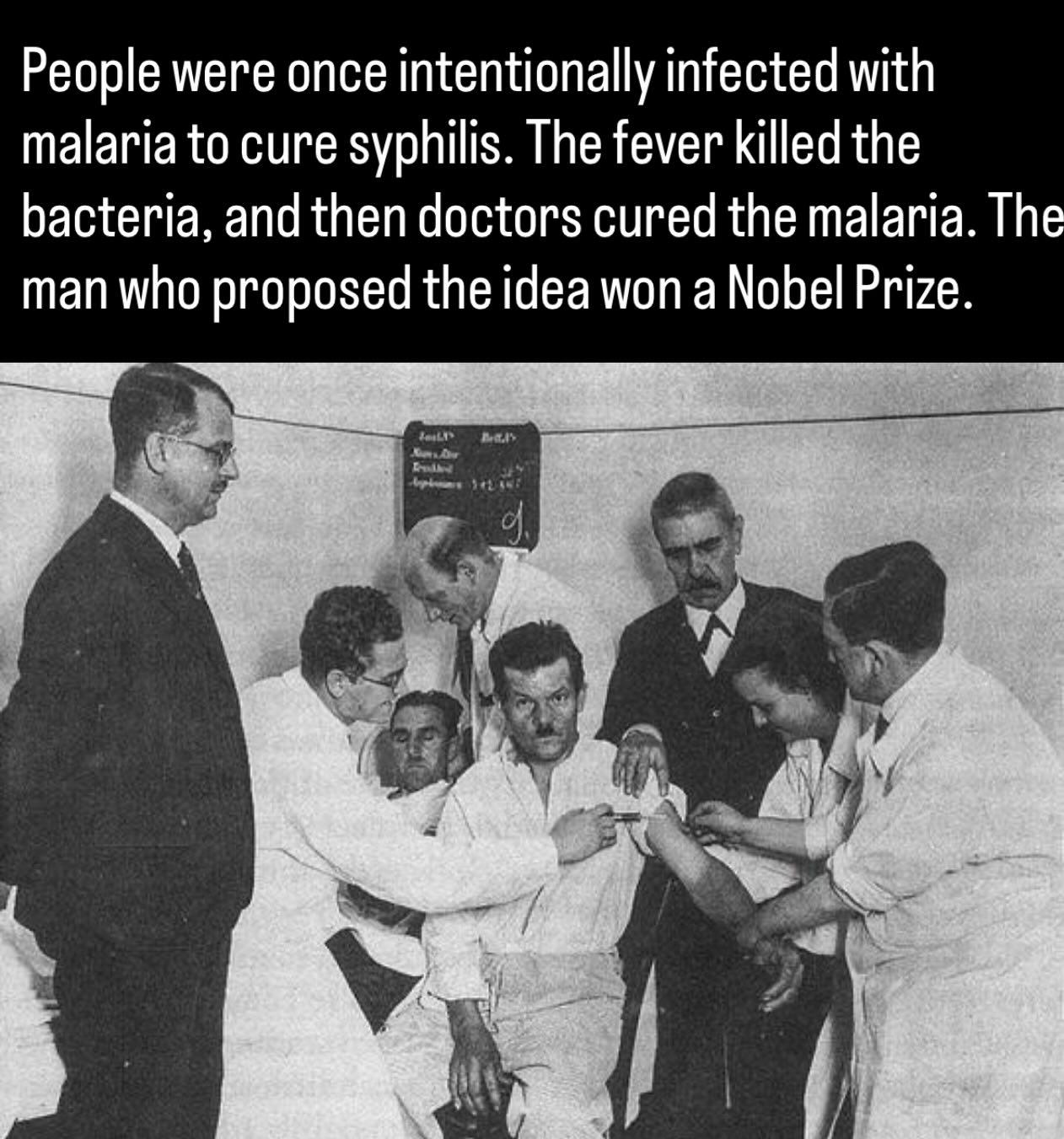I have found this on instagram, is very interesting and "smart" 😎 :
In the early 20th century, before antibiotics, doctors faced few effective treatments for syphilis. Austrian physician Julius Wagner-Jauregg made a bold and bizarre breakthrough: he intentionally infected patients with malaria.
The resulting high fevers were found to kill the Treponema pallidum bacteria that causes syphilis. After a few cycles of fever, the malaria itself could be treated with quinine.
This “malariotherapy” saved many lives and offered one of the first real treatments for late-stage syphilis. Though dangerous by today’s standards, it was seen as a miracle at the time. Wagner-Jauregg’s work earned him the Nobel Prize in Medicine in 1927, marking one of the few times a deliberately induced disease was considered a medical cure.
I have found this on instagram, is very interesting and "smart" 😎 :
In the early 20th century, before antibiotics, doctors faced few effective treatments for syphilis. Austrian physician Julius Wagner-Jauregg made a bold and bizarre breakthrough: he intentionally infected patients with malaria.
The resulting high fevers were found to kill the Treponema pallidum bacteria that causes syphilis. After a few cycles of fever, the malaria itself could be treated with quinine.
This “malariotherapy” saved many lives and offered one of the first real treatments for late-stage syphilis. Though dangerous by today’s standards, it was seen as a miracle at the time. Wagner-Jauregg’s work earned him the Nobel Prize in Medicine in 1927, marking one of the few times a deliberately induced disease was considered a medical cure.














